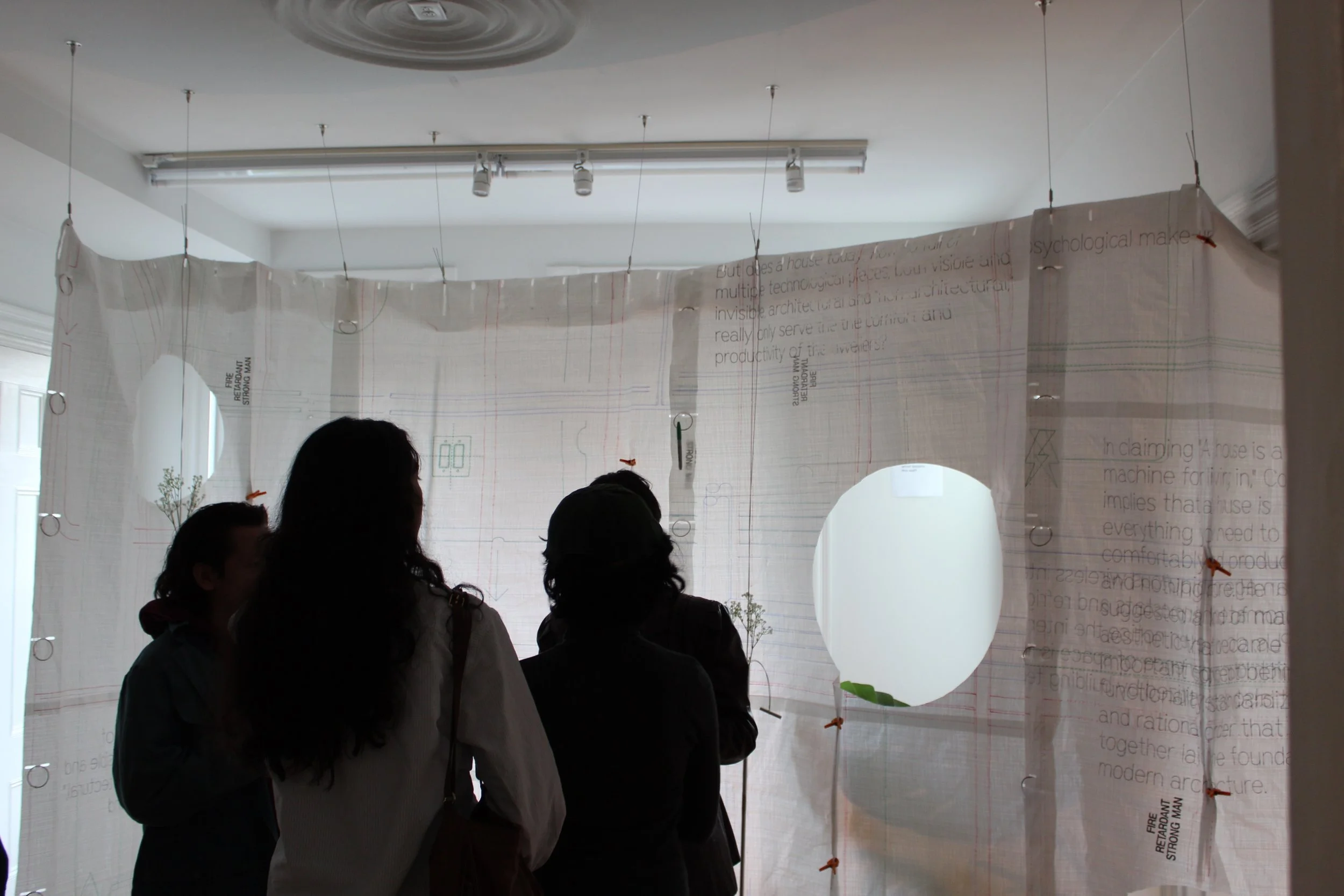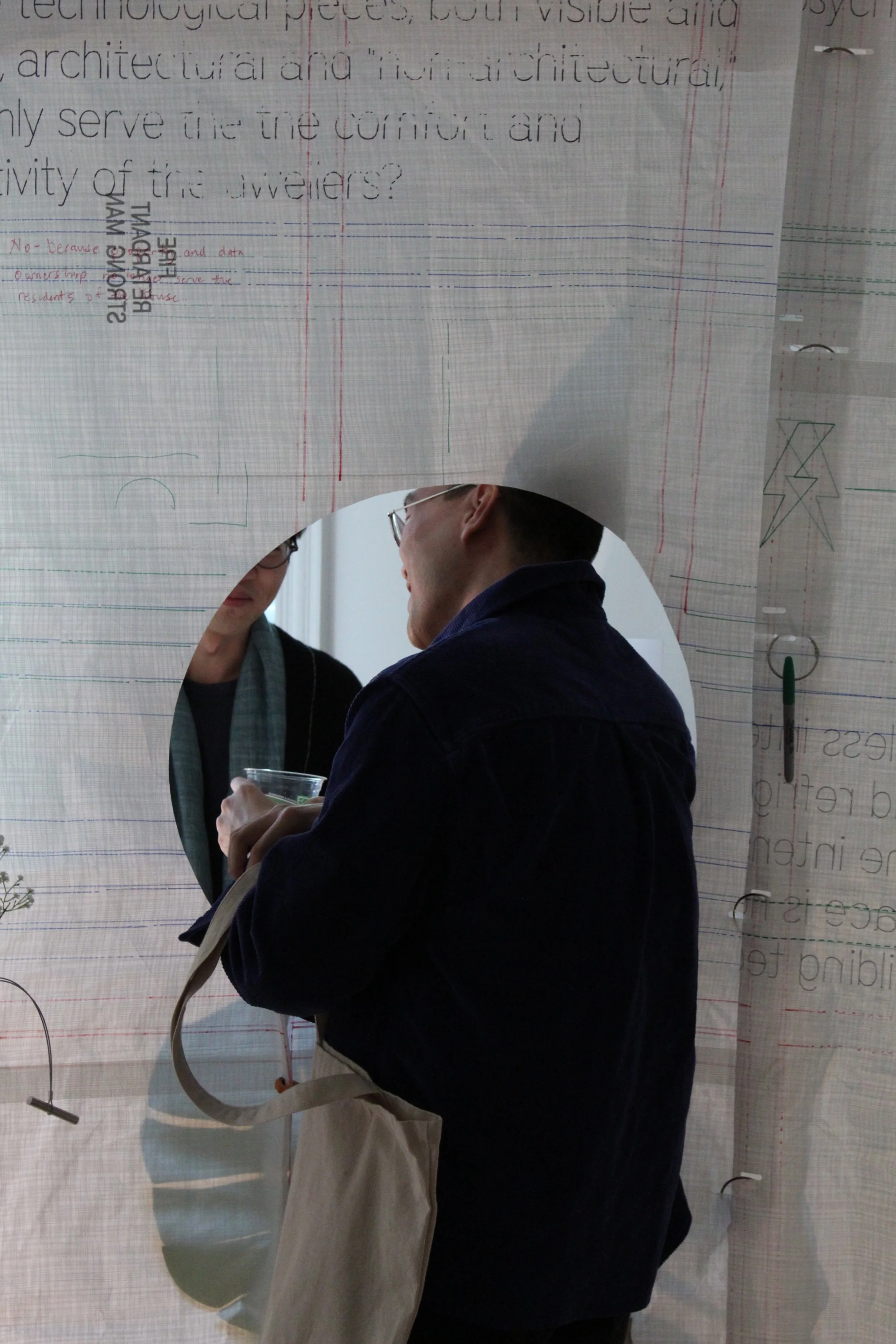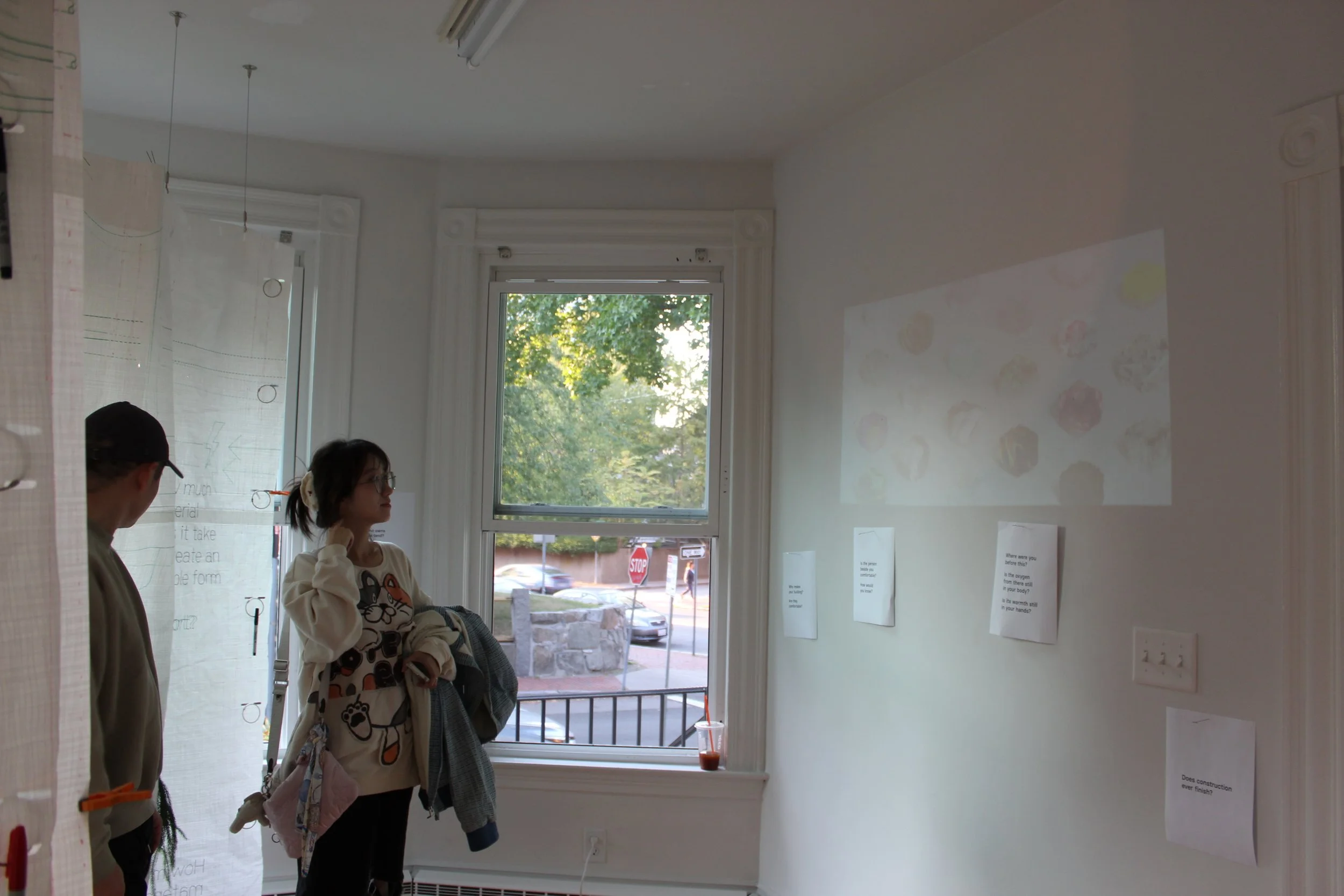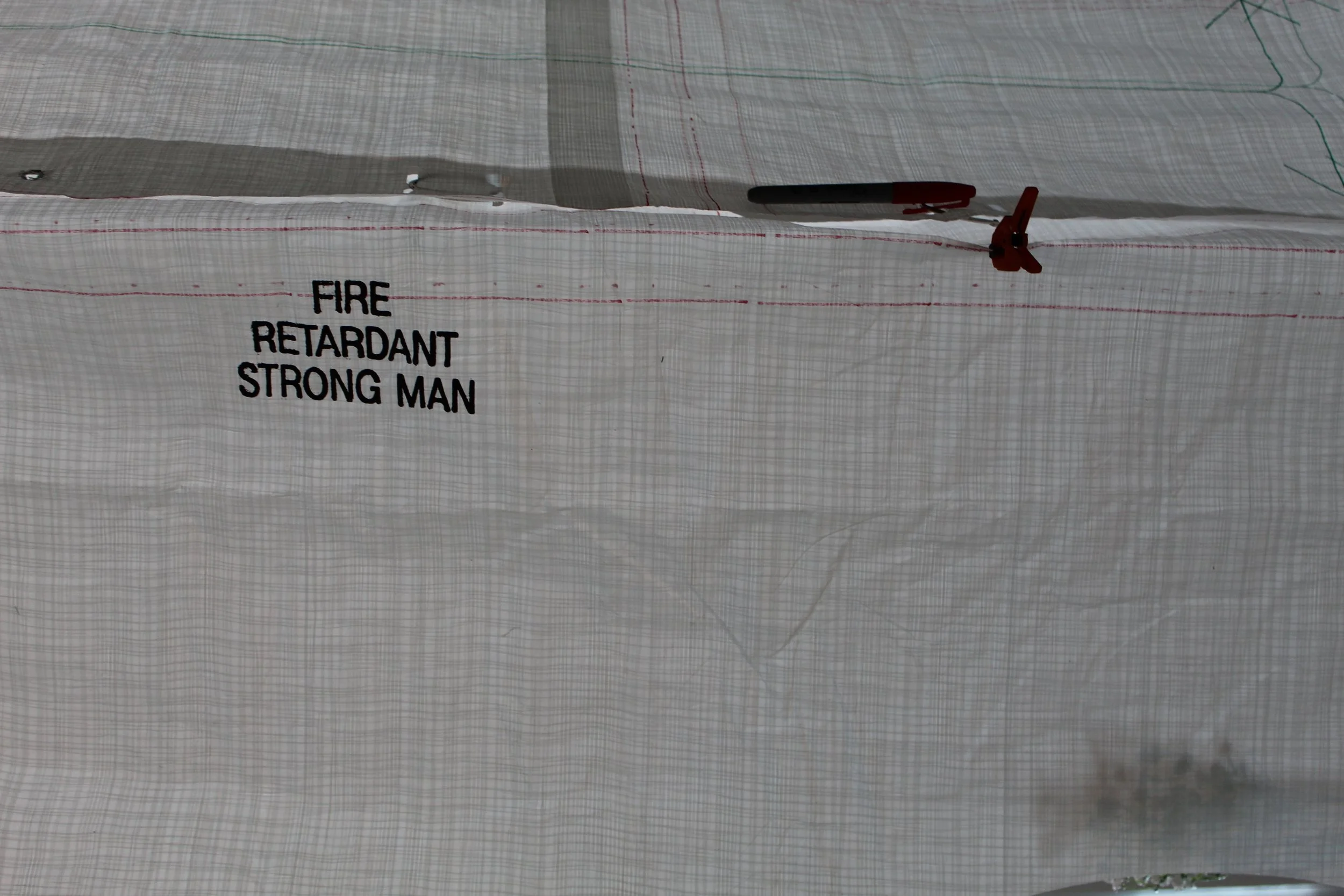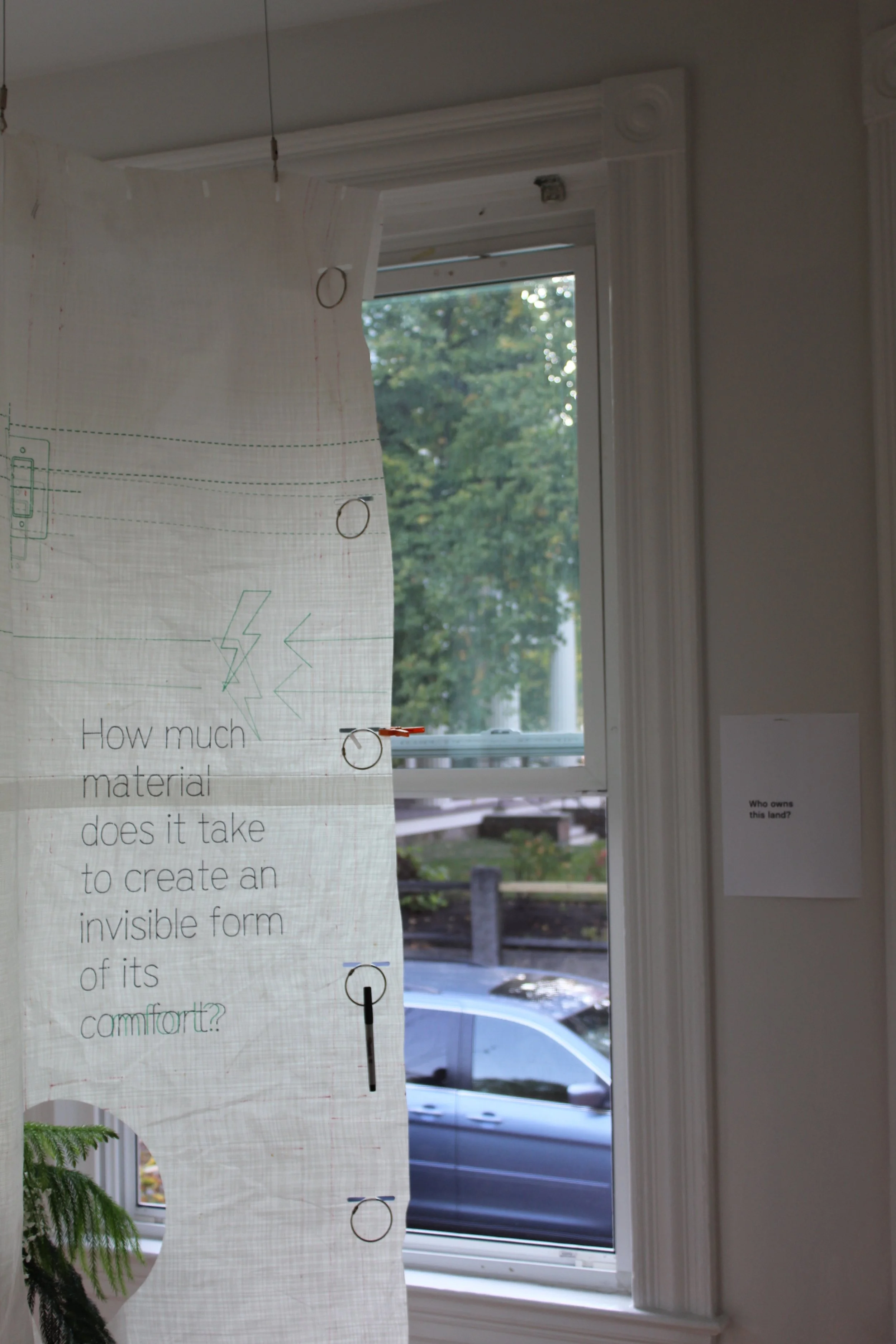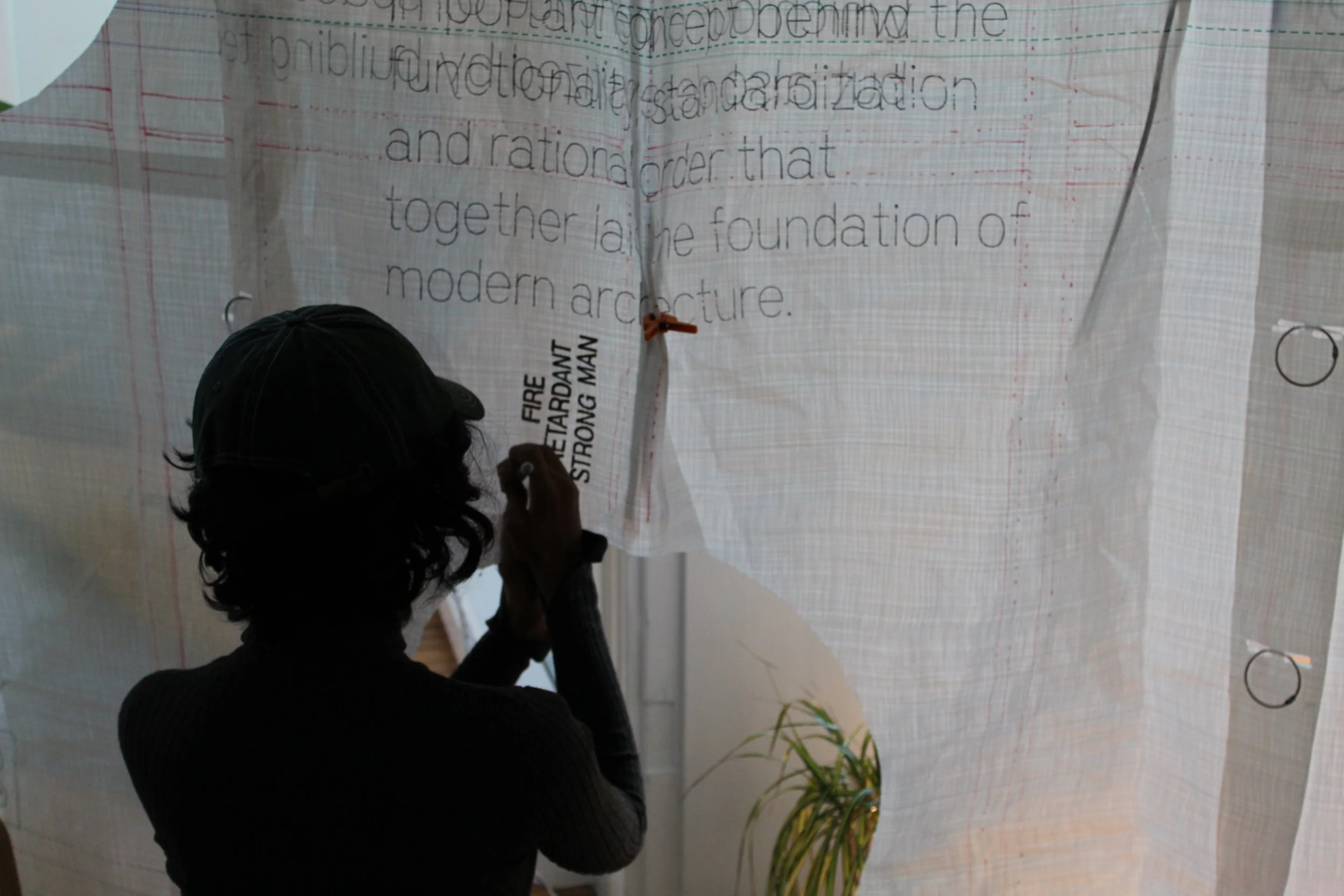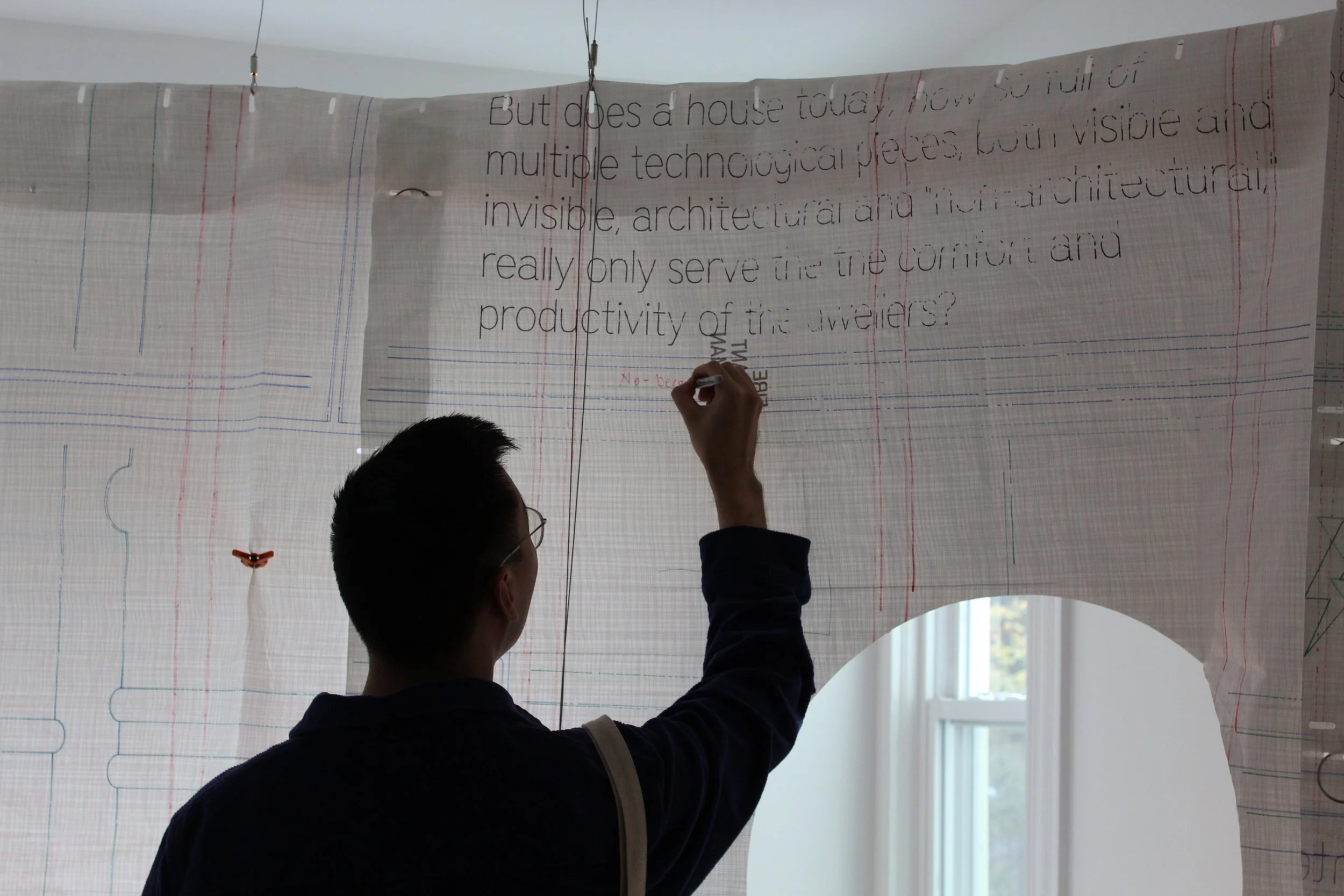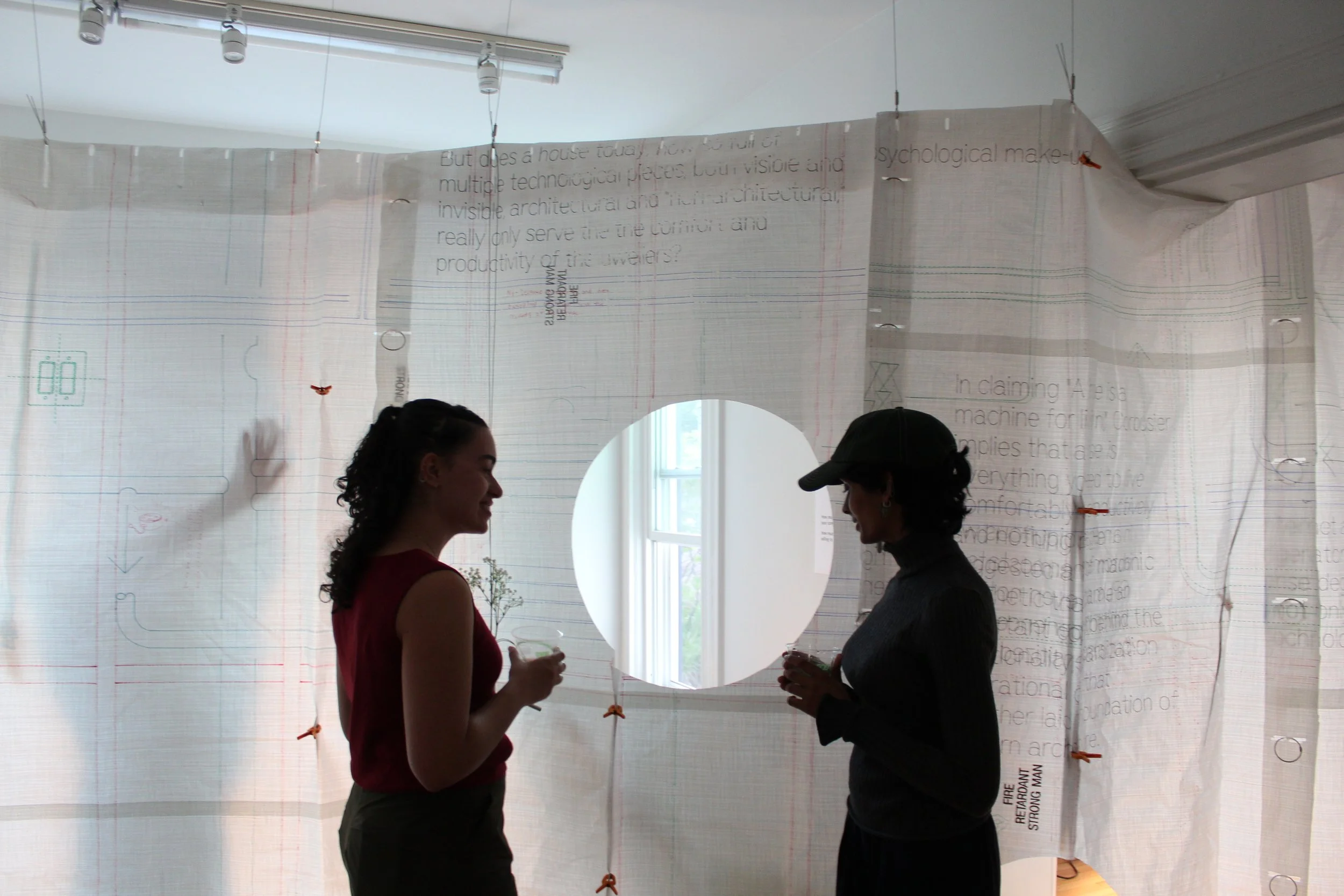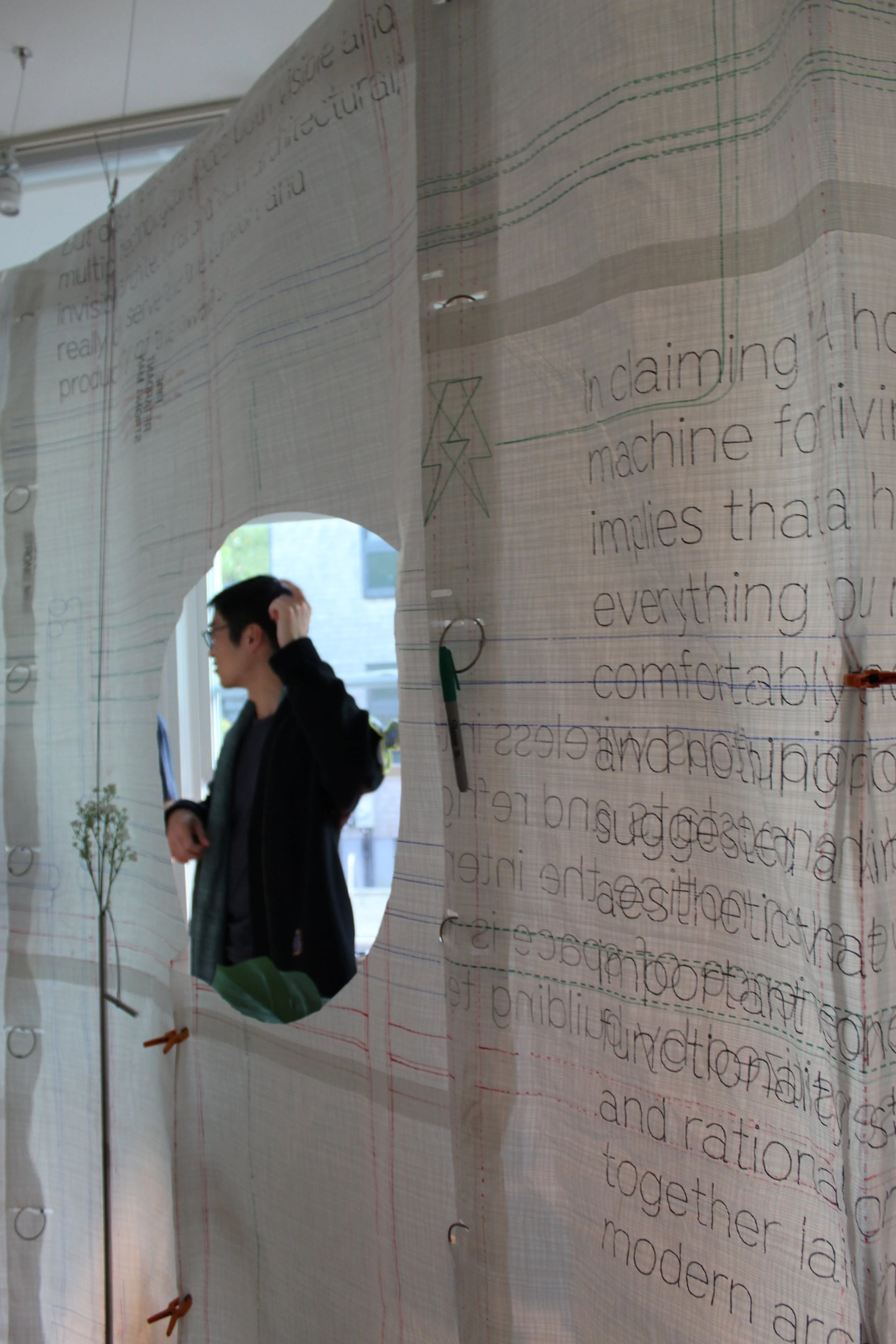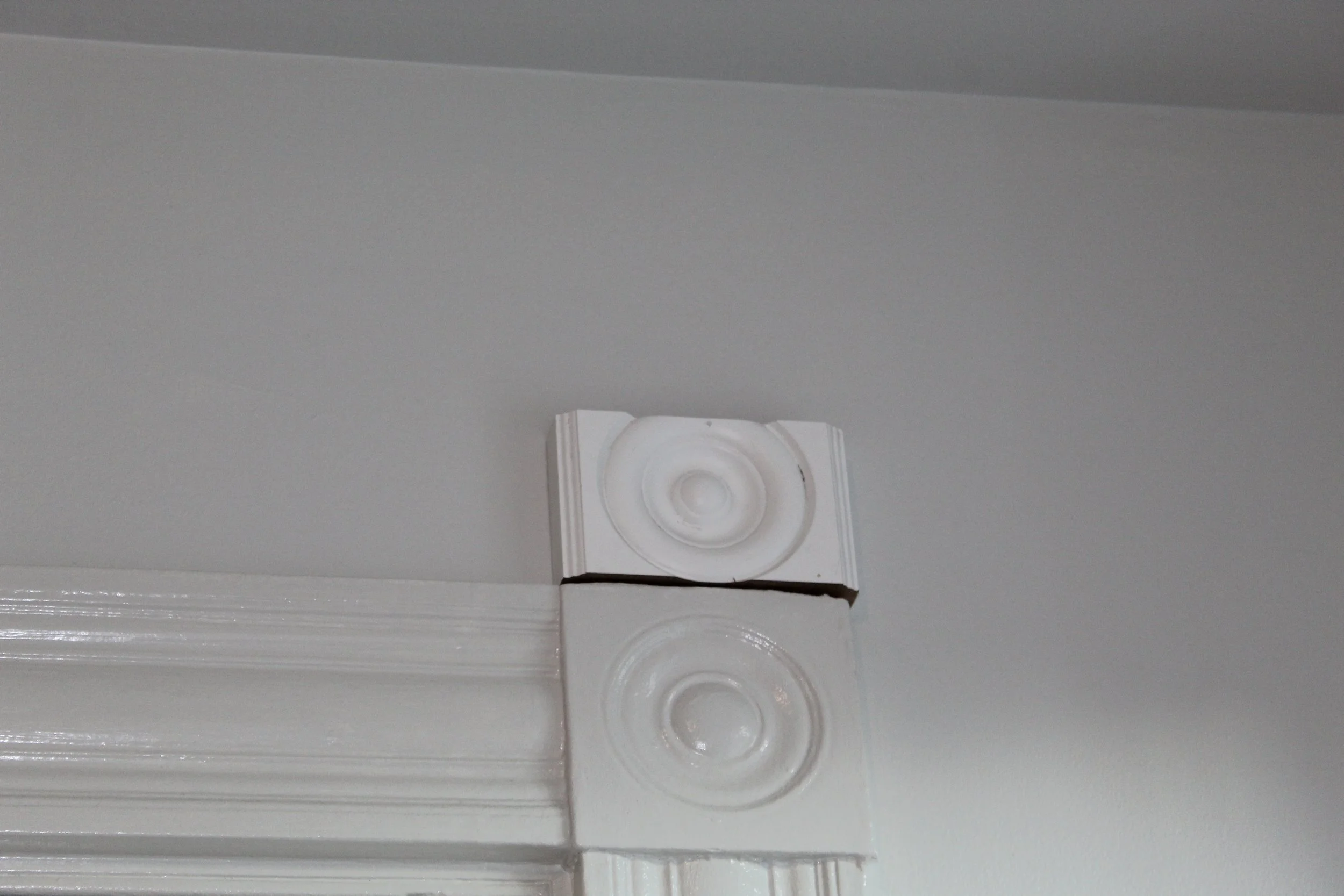2024.11.02 MR NULLUS X The Weight of Comfort
Facade, or the format in which a design is presented is caught up in a series of unseen forces and processes that mediate the visual experience of an audience.
In MR NULLUS challenges workflow and method in the authorship of design when the final product appears as a compilation of linear experiences, when in fact its origin was an assemblage of visual ‘databases’ collected at various times and composed atemporally as a temporal artifact. While WEIGHT OF COMFORT politicizes the mirage of construction through the materiality of reclaimed textiles from the renovations of Gund Hall to underscore the invisibilized labor and capital expended to provide interior comfort and curb energy use.
MR NULLUS
Chenjia Ren, MDes Mediums ‘26
Extracting texts from Bruno’s book Streets of crocodiles and using them as input for disco diffusion. Referencing other artists’ visual composition and engaging GPT3(AI text generator) for narrative structure. The process is never linear but more a lopped design discussion between me, AI, Bruno, and other artists for their visual styles. The project is a synthesis of pictures and poems, set in motion by the film. While referencing back to the work of Brother Quay and Jan Svankmajer in terms of stop-motion animation compositing techniques, the project will combine the live-action and the digital-made to form a hybrid image that emphasizes the tactile experience of a Mimicry and legendary psychasthenia dream.
THE WEIGHT OF COMFORT
Connor Gravelle, MArch ’27
Inmo Kang, March I ‘ 25
Livia Krohn Miller, MArch II ’25
Over the last months, façade renovation at Gund Hall has performed a significant material transformation on the building’s structure to provide better interior comfort and curb energy use. In living around its interruption in our daily experiences, however, we have become aware of the gargantuan expenditure necessary to sustain this conception of comfort. The project creatively manipulates recycled construction material from the renovation site to propose an architectural abject, an ambiguous space-body-machine assemblage working to defamiliarize interior space and to raise new questions about the constructs of our everyday comfort in our domestic space.
